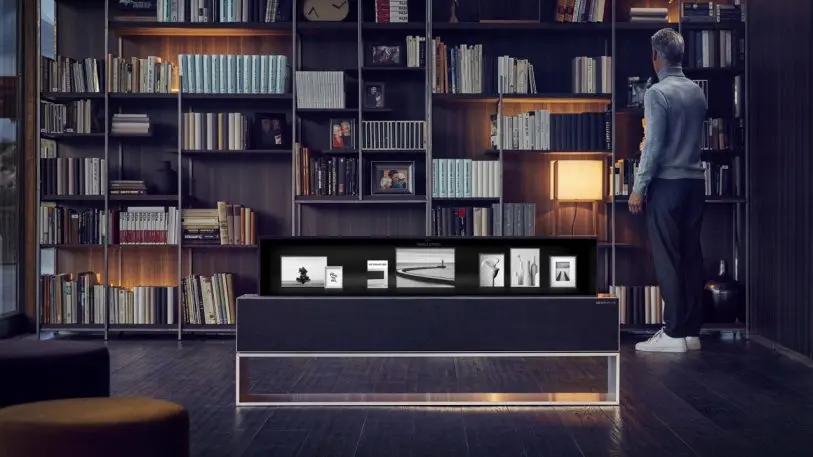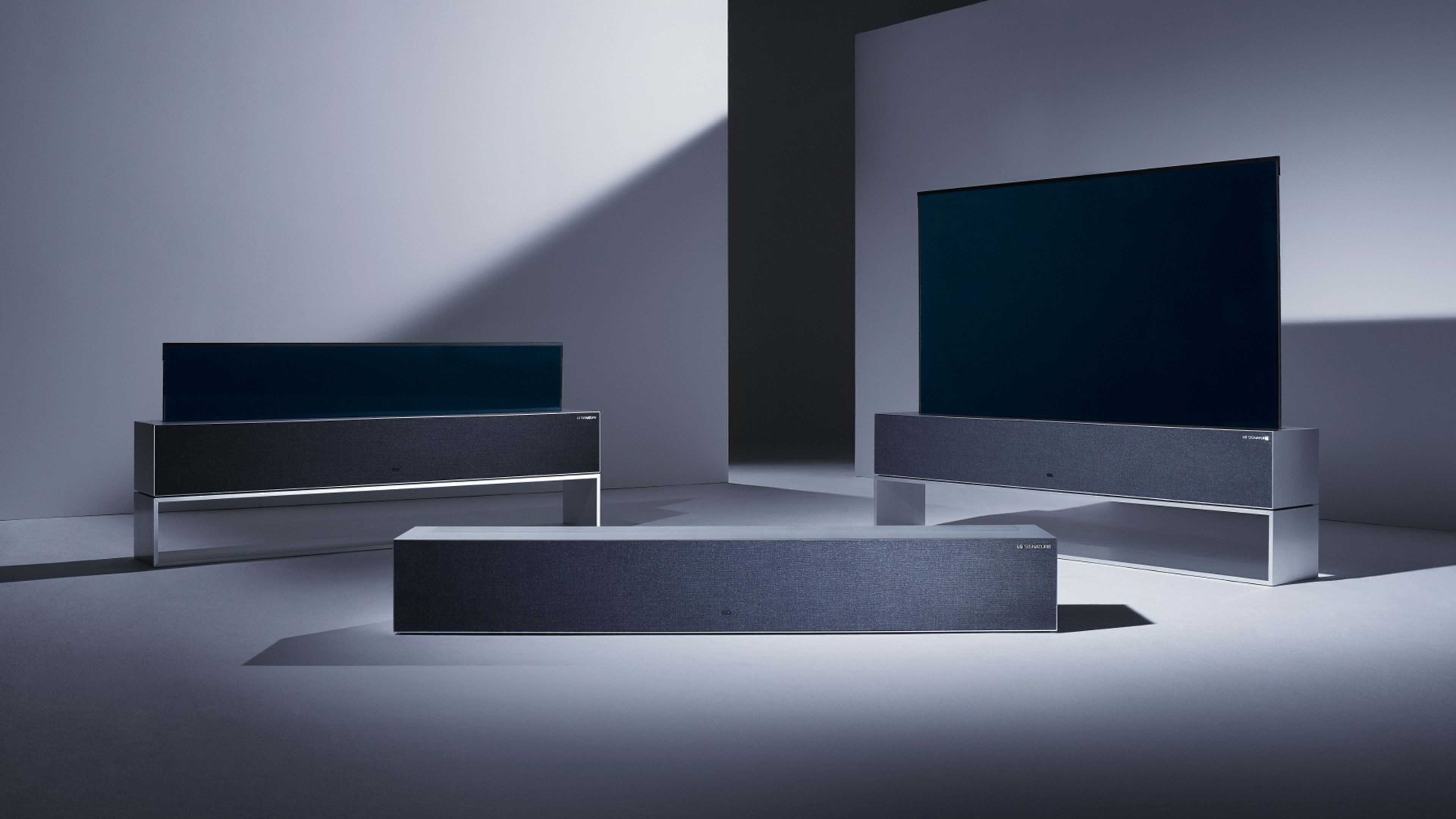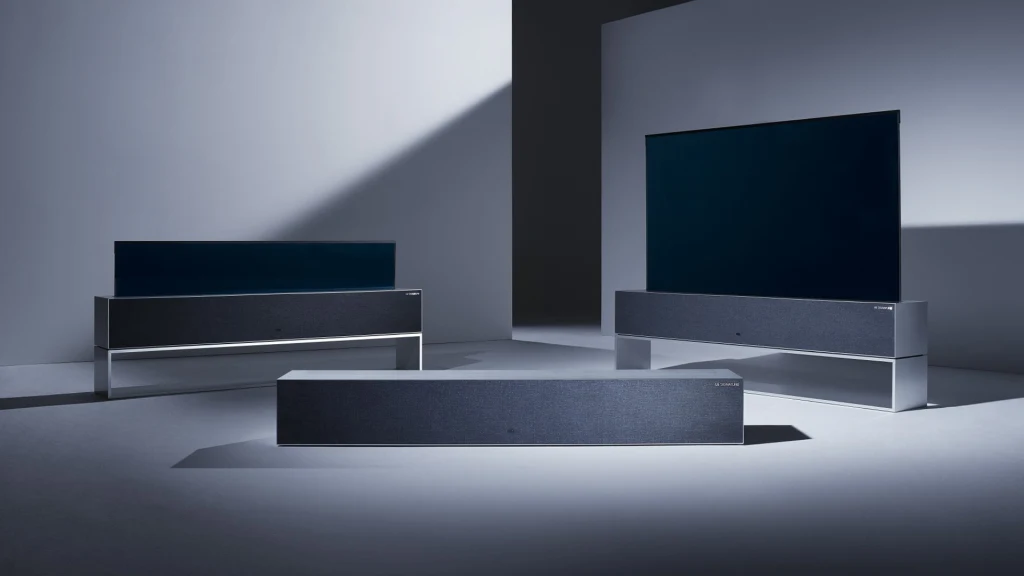This is the LG Signature OLED TV R. The “R” stands for its rollable screen, a 3-millimeter OLED panel that rises from a thin rectangular volume at its base. It’s a technical marvel, but it also solves a big problem with televisions: they tend to be eyesores when they’re off.
[Image: LG]TVs have been dramatically increasing in size and quality–all while dropping in price–since they were invented, but especially in the past decade. Nowadays you can get a 65-inch 4K monster that will offer great image quality for under $1,000. But even the most advanced models still turn into an ugly, dead surface when you’re not using them. It doesn’t matter where you put them–they look terrible. Even if you hang them, and go to the trouble of hiding the cables under the wall, the immense black mirror surface can ruin a room. And no, screen savers that display museum paintings aren’t the answer (those are arguably worse, like fake wood paneling).
But that changes with LG’s new rollable TV, which the company introduced yesterday at CES 2019 in Las Vegas. Rather than having to devote space to the screen somewhere in your living room, the display panel simply emerges from a discrete but pretty white aluminum volume that also houses the audio system. When you need the TV, just turn it on and it quickly unrolls right in front of you. Turn it off and it disappears. No more dead screen ugliness in your living room.
[Photo: Mark Spoonauer/TomsGuide]
This brand-new form factor is even more useful than a conventional TV, since LG also designed three “display modes” that take advantage of its rollable display. The first mode only raises the screen a few inches, enough to show information tiles like the time, weather, news, or music track information if you’re using Airplay 2 or Alexa to stream songs. A second mode gives you a way to play ultra-wide-ratio films like Star Wars or 2001: A Space Odyssey without the black bars on the top or the bottom. And finally, a third mode will give you the 16:9 aspect ratio needed for regular TV, movies, and series.
[Image: LG]
It reminds me of Dieter Rams’s classic Hi-Fi gadgets, like the Braun SK55 vinyl player, the Braun LE1 speaker, or the Braun L60 sound system, since it reflects his principles of good design: the rollable screen is innovative technology, and makes the product more useful than existing TVs. The aesthetics couldn’t be more beautifully simple. It’s unobtrusive and honest to the last detail–as little design as possible. As far as quality goes, “it’s impressive,” according to my colleague, Tom’s Guide editor Mark Spoonauer, who saw it in person in a hotel suite at an LG special CES presentation. As you’d expect from LG–which has led in TVs over the past few years thanks to its OLED panels–the 4K resolution reportedly looks gorgeous in action. The audio unit itself is a 100-watt Dolby Atmos sound system that does 5.1 virtual surround, enough to drive your neighbors crazy, and has Alexa and Google Assistant built in.

The TV will be available in the second half of 2019, and while it doesn’t have a price yet, Spoonauer says it will be LG’s most expensive unit, so you can expect it to cost well over $20,000. But eventually, this kind of technology will likely be available for everyone at a low price–just like every other gadget that debuted at an astronomical price.
Recognize your brand's excellence by applying to this year's Brands That Matters Awards before the early-rate deadline, May 3.






